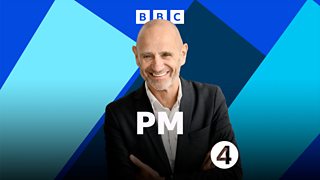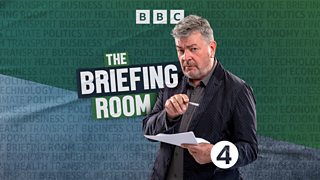8 Things We Learned About How to Read the News

We’re bombarded with news from multiple sources on- and offline, and at all hours of the day.
But are we able to decode the hidden messages and meanings behind the headlines?
In the five-part series How to Read the News, Jo Fidgen examines how the news is made, and how our perception of the facts can be shaped by those presenting them.
Here are eight things we learned about decoding the news.

The news is reported upside down
News stories are written with the latest developments first. This standard technique is known as "the inverted pyramid". It started out of necessity when reporters covering the American Civil War were sending their updates using the telegraph but, because it was still an expensive and unreliable method, they would send the most important information first.
Digital journalism has made it possible for people to change the way they read the news.
Though it goes against everything taught about storytelling at school, where the beginning-middle-end structure is emphasised, as journalism tutor Alice Walker Gregory acknowledges, the inverted triangle passes the “pub test”. Simply put, if you’re meeting friends in the pub you want to give them the most dramatic or interesting part of your day rather than starting with your morning routine!
Listen here to how the inverted pyramid was key to the downfall of CBI Director-General Tony Danker.
Technology allows us to tailor the news
Journalist Shirish Kulkarni feels that the orthodoxy of the inverted pyramid has come at the expense of context. “The problem with inverted is that stuff that would help you understand the world better might be lower down.”
Digital journalism has made it possible for people to change the way they read the news, selecting older updates first or zero-ing in on the biggest moments of a story. “We can present stories which relate to people's individual preferences,” says Kulkarni, who believes that people are “crying out for more context”, particularly if they were not news-obsessives.

An agenda can overpower inconvenient facts
Sometimes facts can be very inconvenient to a news story.
In August this year, the Japanese government announced the release of wastewater from the decommissioned Fukushima Daiichi plant. Stories circulated about the possibility of mutant sea creatures, glow-in-the-dark sushi and even the word Godzilla was mentioned.
However, according to radiation expert Professor Jim Smith, the wastewater released was “seven times lower than the World Health Organisation drinking water limit”.
“The real story here is that China and Japan are at political loggerheads,” says veteran reporter Michael Sheridan, “and this was a very convenient stick with which to beat the Japanese.”
How were China’s spun stories allowed to proliferate? “Unfortunately,” says Jim Smith, “the whole truth actually is quite boring.”
Go down the rabbit hole of Fukushima media stories by listening here.
Anonymous sources are a lifeline
It can be frustrating for a reader to see an anonymous source quoted in a political news story, thinks political reporter at The Sun, Noa Hoffman. "However, without these sources many stories would not see the light of day." One example was the news of the second lockdown in November 2020. The identity of the leaker, known as “chatty rat”, is still not known.

Many anonymous leakers or briefers are easier to guess. Often “a source close to the minister” is code for a special adviser or SpAd. This convention allows a policy idea to be floated to gauge public opinion and often leads to headlines such as "Ministers are considering…" or "The government is set to…"
If a story is attributed to, for example, “a Treasury source” it could be the chancellor himself, Jeremy Hunt, or, says Hoffman, “a policy adviser who has nothing to do with the media in their day-to-day job.”
Leader columns can shed light on anonymous sources
It’s worth taking the time to think about what the reasons why a quote is anonymous, as they can be motivated by grudges or by accident as well as by a desire to take the temperature of public opinion.
Whatever the reason, clues could be right in front of you. “Get the editorial view of the newspaper you're reading,” suggests former SpAd Salma Shah, “and then go back and read the news stories and do it through that context.”
Hear more about how news is gathered from anonymous sources by listening here.

The public can shape the news
Nicola Bulley’s disappearance was one of the biggest UK news stories of 2023. Every detail was pored over, and every update provoked massive interest. Amateur sleuths even descended on the Lancashire village where Bulley lived.
One of the reasons for the mania was that, as 麻豆官网首页入口 News correspondent Danny Savage says, “people love a good mystery.” Meanwhile, the decision by the police not to background brief journalists about Nicola Bulley’s mental health – in part obstructed by regulations imposed by the Leveson Inquiry – kept the public speculation over Bulley’s death going.
“We will look back on the tragic case of Nicola Bulley and say there was a turning of the corner in the way people show interest in news stories,” says Savage.
Victim hierarchies can dictate which tragedies we read most about
Race, class, mental health and addiction can all be key factors in dictating the amount of coverage that a victim of a serious crime will receive. This is called a "victim hierarchy".
“In terms of how we engage with stories. We certainly, as the public, have a role to play in continuing the bias,” says Professor Karen Shalev, director of the Missing Persons Research Group. “Members of the media want to make stories and find stories that the public will engage with.”
Hear how differently the murders of Hannah Williams and Milly Dowler were reported by listening here

Not all victims are the same...
How the Hannah Williams and Milly Dowler cases shed light on victim hierarchies.
How privacy law now impacts the concept of "public interest" and curbs what journalists can tell us
The tightening up of privacy law over the last 15 years has essentially killed off kiss-and-tell and some celebrity scandal stories. It’s now having an impact on news reports of criminal investigations as people are invoking privacy law to stop journalists reporting that they have been arrested or investigated.
Although escaping a fixed definition, “the public interest” and how it is interpreted by law governs what we read in the news.
Since the Human Rights Act came into force in 2000, there has been a balancing act to be struck between everyone having "the right to respect for private and family life, home and correspondence" (Article 8) and "freedom of expression" (Article 10). The rule of thumb established by early case law was that you can publish private information if it exposes hypocrisy or catches someone out in a lie.
In cases where a criminal investigation is underway the waters were muddier. Cliff Richard famously won a case over 麻豆官网首页入口 intrusion, and the case highlighted the need for privacy up until the point of a criminal charge being made. However, The Times’s editorial legal director Pia Sama worries that the press has had to self-censor. Nonetheless her paper made the call to ultimately name the parliamentary researcher accused – but not charged – of spying for China, judging the public interest caveat correctly.
Find out how the lawyers acting for Philip Schofield’s former colleague kept his name out of the press, by listening here.
-
![]()
Listen to How to Read the News
A five-part series revisiting news stories from a year ago to forensically examine how the news is made, and how our perception of the facts can be shaped by those presenting them. With Jo Fidgen.

News and current affairs on Radio 4
-
![]()
Today
Radio 4's flagship news and current affairs programme.
-
![]()
World at One
Forty-five minutes of news, analysis and comment, with Sarah Montague.
-
![]()
PM
Afternoon news and current affairs programme, reporting on breaking stories and summing up the day's headlines
-
![]()
The Briefing Room
David Aaronovitch and a panel of experts and insiders present in-depth explainers on big issues in the news.





